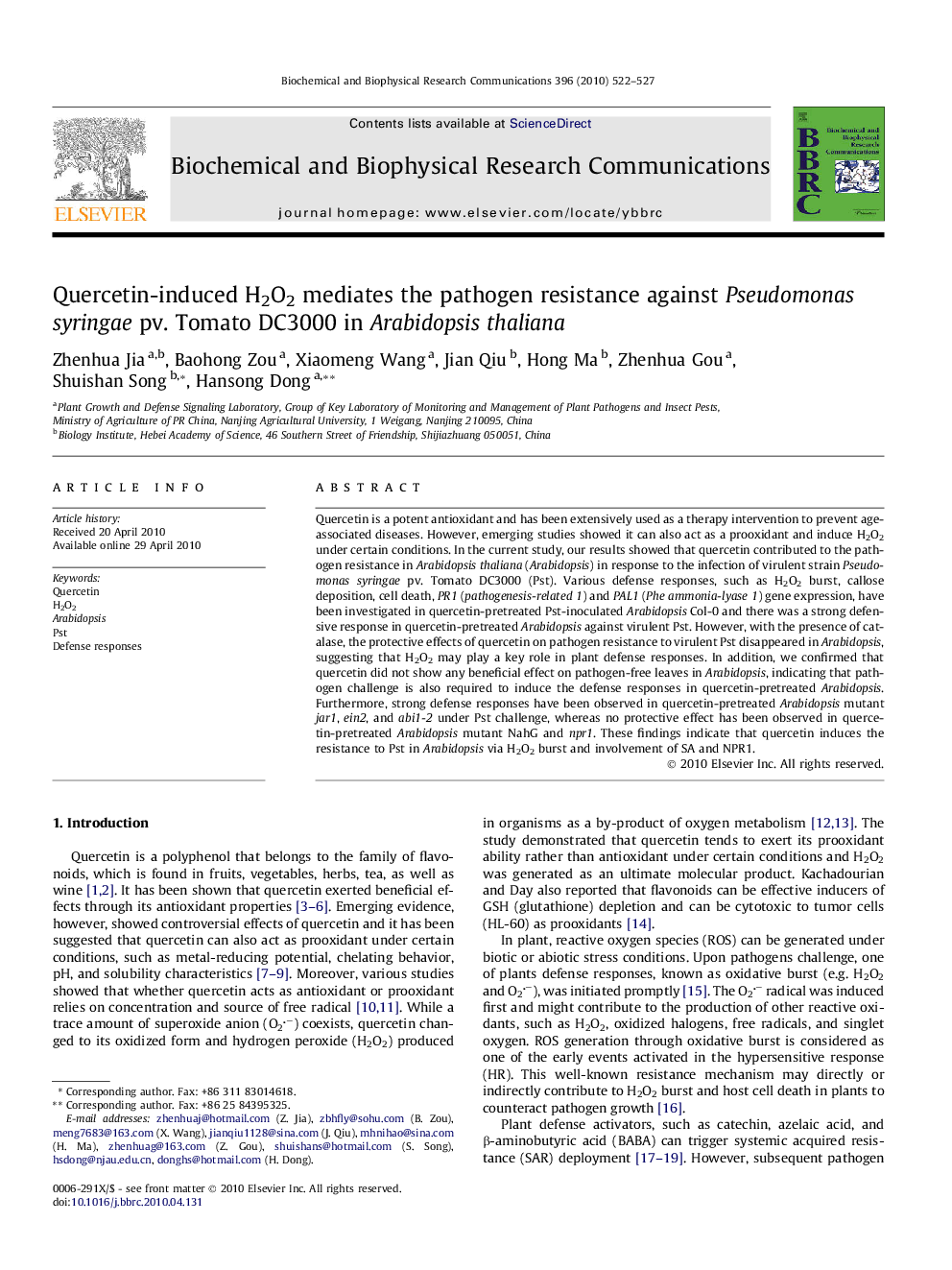| Article ID | Journal | Published Year | Pages | File Type |
|---|---|---|---|---|
| 1932248 | Biochemical and Biophysical Research Communications | 2010 | 6 Pages |
Quercetin is a potent antioxidant and has been extensively used as a therapy intervention to prevent age-associated diseases. However, emerging studies showed it can also act as a prooxidant and induce H2O2 under certain conditions. In the current study, our results showed that quercetin contributed to the pathogen resistance in Arabidopsis thaliana (Arabidopsis) in response to the infection of virulent strain Pseudomonas syringae pv. Tomato DC3000 (Pst). Various defense responses, such as H2O2 burst, callose deposition, cell death, PR1 (pathogenesis-related 1) and PAL1 (Phe ammonia-lyase 1) gene expression, have been investigated in quercetin-pretreated Pst-inoculated Arabidopsis Col-0 and there was a strong defensive response in quercetin-pretreated Arabidopsis against virulent Pst. However, with the presence of catalase, the protective effects of quercetin on pathogen resistance to virulent Pst disappeared in Arabidopsis, suggesting that H2O2 may play a key role in plant defense responses. In addition, we confirmed that quercetin did not show any beneficial effect on pathogen-free leaves in Arabidopsis, indicating that pathogen challenge is also required to induce the defense responses in quercetin-pretreated Arabidopsis. Furthermore, strong defense responses have been observed in quercetin-pretreated Arabidopsis mutant jar1, ein2, and abi1-2 under Pst challenge, whereas no protective effect has been observed in quercetin-pretreated Arabidopsis mutant NahG and npr1. These findings indicate that quercetin induces the resistance to Pst in Arabidopsis via H2O2 burst and involvement of SA and NPR1.
